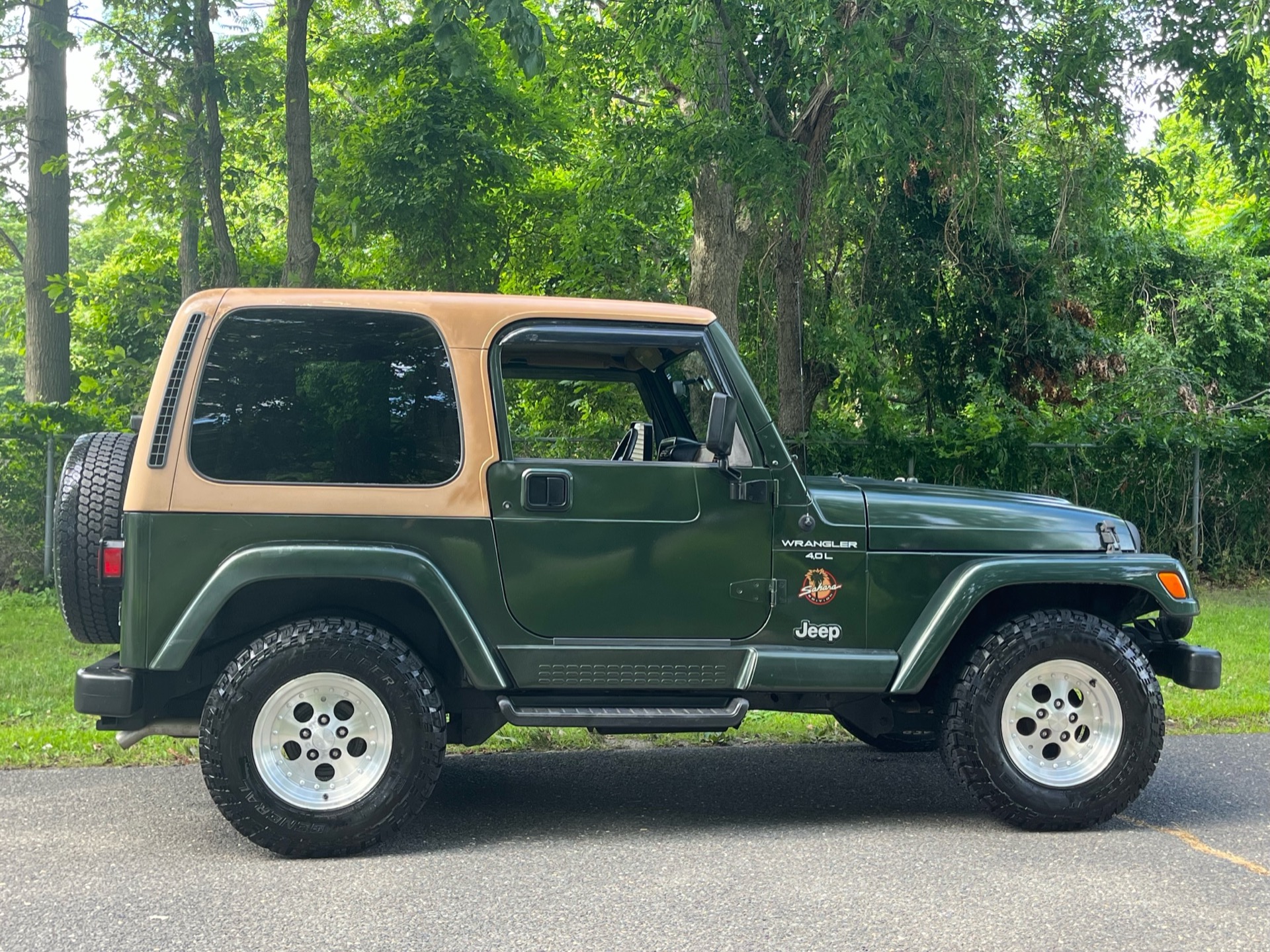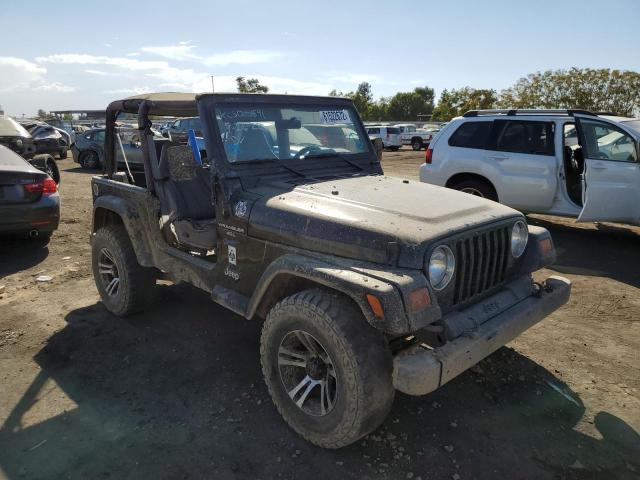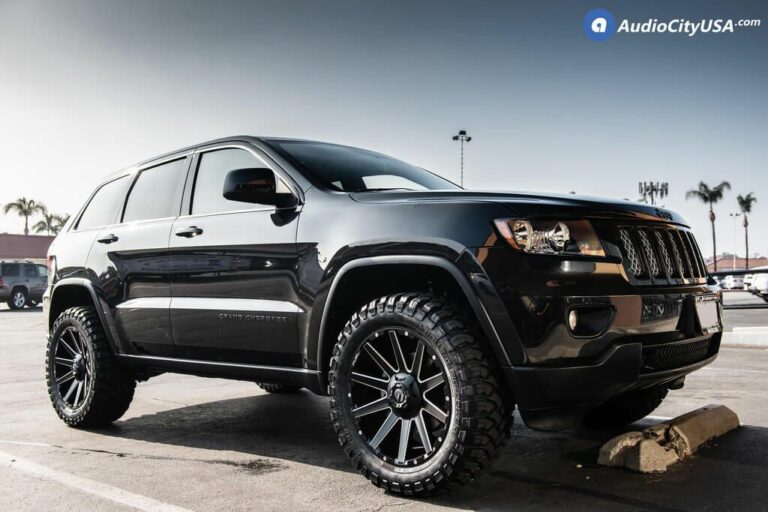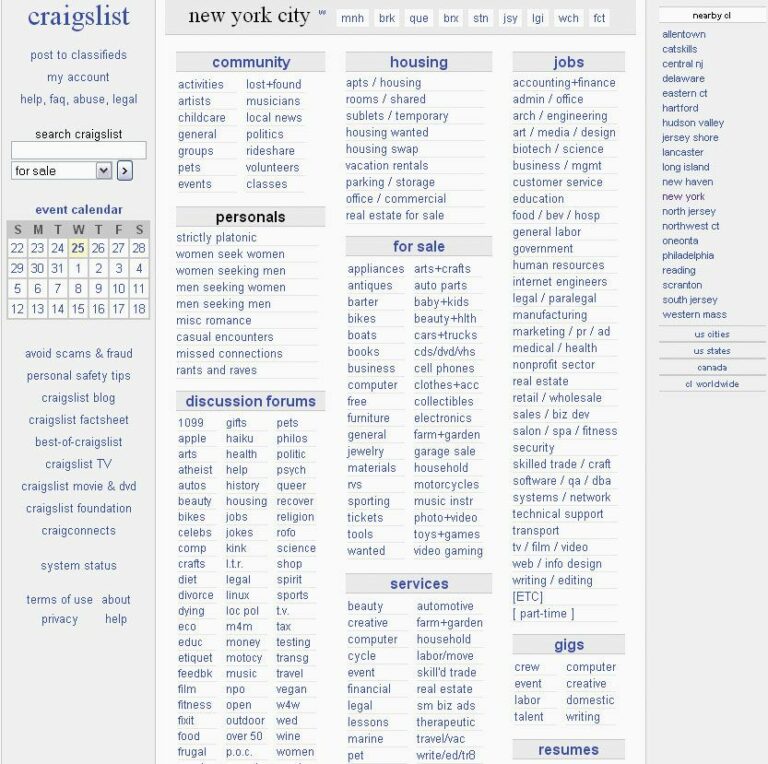1997 Jeep TJ For Sale: Your Ultimate Buyer’s Guide
1997 Jeep TJ For Sale: Your Ultimate Buyer’s Guide /jeeps.truckstrend.com
The year 1997 marked a significant turning point in the storied history of the Jeep Wrangler, ushering in the TJ generation. Moving away from the leaf-spring suspension of its YJ predecessor, the 1997 Jeep TJ introduced a coil-spring setup, revolutionizing its on-road comfort while retaining its legendary off-road prowess. For enthusiasts and newcomers alike, a 1997 Jeep TJ for sale isn’t just an offer; it’s an invitation to own a piece of automotive history, a vehicle renowned for its simplicity, ruggedness, and unparalleled customizability. This comprehensive guide will navigate the nuances of finding, evaluating, and purchasing your ideal 1997 Jeep TJ, ensuring you make an informed decision on this iconic vehicle.
Why the 1997 Jeep TJ Remains a Coveted Classic
1997 Jeep TJ For Sale: Your Ultimate Buyer’s Guide
When considering a used Jeep, the 1997 TJ often stands out as a sweet spot in the Wrangler lineage. Its introduction brought a host of improvements that significantly enhanced the driving experience without sacrificing the core Jeep identity.
- Coil Spring Suspension: This was the game-changer. The new coil-spring setup provided a vastly improved ride quality compared to the bone-jarring leaf springs of earlier Wranglers. This made the TJ more comfortable for daily driving and highway travel, while still offering excellent articulation for off-roading.
- Legendary 4.0L Inline-Six Engine: Many 1997 TJs come equipped with the venerable 4.0-liter AMC inline-six engine. Known for its bulletproof reliability, strong low-end torque, and ease of maintenance, this engine is a significant draw for many buyers.
- Classic Jeep Aesthetics: The 1997 TJ retained the classic round headlights and seven-slot grille, a look that resonates deeply with traditional Jeep enthusiasts and maintains the iconic Wrangler silhouette.
- Unmatched Aftermarket Support: Due to its immense popularity and long production run (1997-2006), the aftermarket for TJ parts and accessories is vast. From lift kits and armor to engine components and interior upgrades, you can customize a TJ to your heart’s content.
- Strong Resale Value: Jeeps, especially Wranglers, tend to hold their value exceptionally well, and the TJ generation is no exception. A well-maintained 1997 TJ can be a sound investment, offering both utility and enduring market appeal.
- Simplicity and Repairability: Unlike many modern vehicles, the TJ is relatively simple in its mechanical design. This makes it easier for DIY enthusiasts to perform maintenance and repairs, reducing ownership costs.
Key Features and Specifications of the 1997 TJ
Understanding the core specifications of the 1997 TJ will help you identify the right model for your needs.
- Engine Options:

- 2.5L AMC I4 (120 hp): Found primarily in the SE trim, this engine offers decent fuel economy but can feel underpowered, especially with larger tires or heavy modifications.
- 4.0L AMC I6 (181 hp): The more common and highly recommended engine, offering robust power and torque for both on-road driving and off-road excursions.
- Transmission Options:

- Manual: AX-15 (early 1997) or NV3550 (late 1997+). Both are durable 5-speed manual transmissions.
- Automatic: 32RH (3-speed automatic). Reliable but lacks the overdrive of modern automatics, impacting highway fuel economy.
- Axles:
- Front: Dana 30 (standard on all TJs).
- Rear: Dana 35 (standard on most TJs), Dana 44 (optional on Sport and Sahara trims, highly desirable for off-roading due to its strength).
- Transfer Case: NP231 Command-Trac (part-time 4WD with 2H, 4H, N, 4L settings).
- Suspension: Quadra-Coil suspension with front and rear coil springs.
- Body Styles: Available as a two-door soft top or hardtop, with options for full steel doors or half doors.
What to Look For: A Comprehensive Pre-Purchase Inspection Guide
When a 1997 Jeep TJ is for sale, its condition is paramount. Due to their age and common use off-road, TJs can suffer from various issues. A thorough inspection is crucial.
-
Frame Rust (Critical!): This is the absolute most important area to inspect. Pay close attention to:
- Skid Plate Mounts: Rust often starts here due to moisture and debris accumulation.
- Control Arm Mounts: Check where the control arms attach to the frame; these are high-stress points.
- Behind the Rear Wheels/Bumper: The rear frame sections are notorious for rusting out.
- Under the Doors/Rocker Panels: While not frame, severe body rust here can indicate deeper issues.
- Solution: Surface rust can be treated, but widespread, flaky, or perforated rust indicates severe structural damage that is expensive and difficult to repair properly. Walk away from TJs with significant frame rot.
-
Body Rust:
- Fenders: Especially the rear fenders where dirt and salt collect.
- Floor Pans: Lift the carpet to check for rust, particularly near the drain plugs.
- Door Jambs and Hinges: Look for bubbling paint or rust.
-
Engine (4.0L I6):
- Leaks: Check for oil leaks (common areas: valve cover, oil pan, rear main seal – the latter is a common TJ issue but not always severe enough to warrant immediate repair).
- Noises: Listen for knocking, ticking (especially from lifters), or unusual sounds.
- Coolant: Check the color and level of coolant. Look for signs of overheating (discolored coolant, residue around the radiator).
- Maintenance: Ask for service records. A well-maintained 4.0L can last well over 200,000 miles.
-
Transmission & Transfer Case:
- Manual: Test all gears, ensuring smooth engagement without grinding. Check clutch feel.
- Automatic: Shifts should be smooth, without harsh jerking or slipping.
- 4WD Engagement: Engage 4-High and 4-Low to ensure the transfer case shifts properly. Listen for grinding or binding.
-
Suspension & Steering:
- Worn Components: Look for cracked bushings, leaking shocks, and bent control arms.
- Steering Play: Excessive play in the steering wheel could indicate worn tie rod ends, ball joints, or a faulty steering box.
- "Death Wobble": While often a symptom of worn components, check for signs of previous "death wobble" like recently replaced steering parts or heavy steering dampeners.
-
Drivetrain:
- U-Joints: Check for play in the driveshaft u-joints.
- Differential Leaks: Look for fluid leaks from the differential covers.
-
Electrical & Interior:
- Test all lights, gauges, wipers, HVAC, and power windows (if equipped).
- Check for water leaks from the soft top or hardtop seals.
- Inspect seats, carpet, and dashboard for excessive wear or damage.
-
Tires: Check tread depth, uneven wear (indicating alignment issues), and tire age.
-
Modifications: Many TJs are modified. Assess the quality of modifications:
- Lift Kits: Are they professionally installed? Are the control arms, driveshafts, and steering components appropriate for the lift height?
- Aftermarket Bumpers/Armor: Check for solid mounting and signs of abuse.
- Poorly executed modifications can lead to significant problems and additional costs.
Common Issues and Solutions for the 1997 TJ
Even a well-maintained 1997 TJ may exhibit some common quirks. Knowing them helps in negotiation and future planning.
- Rear Main Seal Leak: A very common oil leak on the 4.0L. Often minor, but can be a messy repair. Not always a deal-breaker unless it’s severe.
- "Death Wobble": A violent shaking of the front end, usually triggered by hitting a bump at speed. It’s almost always caused by a combination of worn steering and suspension components (track bar, ball joints, tie rod ends, control arm bushings). Fixable, but requires diagnosing the specific culprits.
- Exhaust Manifold Cracks: The 4.0L manifold is prone to cracking, leading to a ticking sound, especially when cold. Replaceable with an aftermarket header.
- Clogged Catalytic Converter: Can lead to reduced power and check engine lights.
- Rust: As discussed, the biggest enemy. Prevention and early treatment are key.
- Soft Top Wear: Zippers, seams, and plastic windows can deteriorate over time. Replacement tops are readily available.
Practical Advice for a Successful Purchase
- Set a Realistic Budget: Beyond the purchase price, factor in potential repairs, maintenance, and insurance. Older vehicles, especially Jeeps, often need some TLC.
- Research Market Prices: Use online classifieds (Craigslist, Facebook Marketplace, dedicated Jeep forums) and reputable used car sites to understand the price range for TJs in your area, factoring in condition, mileage, and modifications.
- Get a Pre-Purchase Inspection (PPI): Even if you’re handy, pay a trusted mechanic (ideally one familiar with Jeeps) to perform a thorough inspection. It’s a small investment that can save you thousands.
- Test Drive Extensively: Drive it on various road types – city, highway, and if possible, some uneven terrain. Listen for noises, feel for vibrations, and test all functions.
- Ask for Maintenance Records: A history of regular maintenance is a strong indicator of a well-cared-for vehicle.
- Don’t Rush: The perfect TJ might not be the first one you see. Be patient and willing to walk away if a vehicle doesn’t meet your standards.
- Consider Insurance Costs: Older vehicles, especially those often modified, can sometimes have higher insurance premiums. Get quotes before buying.
1997 Jeep TJ For Sale: Estimated Price Guide
The price of a 1997 Jeep TJ varies significantly based on its condition, mileage, modifications, and geographical location. This table provides a general guideline:
| Condition Category | Estimated Price Range (USD) | Key Factors Influencing Price |
|---|---|---|
| Project/Parts Car | $2,000 – $5,000 | Significant frame or body rust, non-running, major mechanical issues, incomplete, needs extensive work. |
| Fair/Driver Quality | $5,000 – $9,000 | Moderate rust, higher mileage (150,000+), some mechanical issues (e.g., oil leaks, worn suspension), stock or basic, older modifications, needs immediate TLC. |
| Good Condition | $9,000 – $15,000 | Minimal surface rust, well-maintained, running strong, lower-to-moderate mileage (80,000-150,000), possibly tasteful and well-installed modifications. |
| Excellent/Show Quality | $15,000 – $25,000+ | Rust-free (especially frame), meticulously maintained, very low mileage (<80,000), highly original or professionally restored/built with high-quality parts. |
Note: Prices can fluctuate based on specific features like the 4.0L engine, Dana 44 rear axle, hardtop, air conditioning, and professional modifications. A TJ with extensive, high-quality upgrades (e.g., long-arm lift, aftermarket axles) can command a premium, but poorly done mods can significantly reduce value.
Frequently Asked Questions (FAQ) about the 1997 Jeep TJ
Q: Is the 1997 TJ a good first Jeep?
A: Absolutely. Its robust design, relative simplicity, strong aftermarket, and engaging driving experience make it an excellent choice for a first-time Jeep owner, especially if you’re prepared for potential maintenance.
Q: What’s the main difference between a 1997 TJ and a YJ (1987-1995)?
A: The most significant difference is the suspension: the YJ uses leaf springs, while the TJ uses coil springs, providing a much smoother ride and better articulation. The TJ also brought back round headlights, unlike the YJ’s square ones.
Q: Which engine is better, the 2.5L or the 4.0L?
A: For most buyers, the 4.0L inline-six is vastly superior. It offers significantly more power and torque, making it better for highway driving, heavier modifications, and serious off-roading. The 2.5L is adequate for light duty and better fuel economy.
Q: How much rust is too much on a 1997 TJ?
A: Any significant, flaky, or perforated rust on the frame is generally "too much" and should be a deal-breaker. Surface rust is manageable, but deep, structural rust is extremely difficult and costly to repair safely and effectively.
Q: Can I daily drive a 1997 TJ?
A: Yes, many people daily drive their TJs. The coil-spring suspension makes it more comfortable than older Wranglers. However, expect a more rugged, less refined ride than modern SUVs, and potentially lower fuel economy.
Q: What is "death wobble" and how do I prevent/fix it?
A: Death wobble is a violent, uncontrollable shaking of the front end, usually triggered by hitting a bump. It’s caused by loose or worn steering and suspension components (e.g., track bar, tie rod ends, ball joints, control arm bushings). It’s fixable by replacing the worn parts and ensuring proper alignment.
Q: Are parts readily available for the 1997 TJ?
A: Yes, parts availability is excellent. Due to the TJ’s popularity and long production run, OEM, aftermarket, and used parts are widely available, making maintenance and customization easy.
Conclusion
The 1997 Jeep TJ for sale represents more than just a used vehicle; it embodies an enduring spirit of adventure, customization, and rugged capability. With its iconic design, reliable powertrain, and coil-spring comfort, it remains a highly sought-after model for both seasoned off-roaders and those looking to embark on their first Jeep journey. By approaching your search with diligence, armed with the knowledge of common issues and a keen eye for condition, you can secure a classic 1997 TJ that will provide years of open-air freedom and unforgettable experiences. Owning a TJ isn’t just about driving; it’s about joining a passionate community and embracing a lifestyle.




